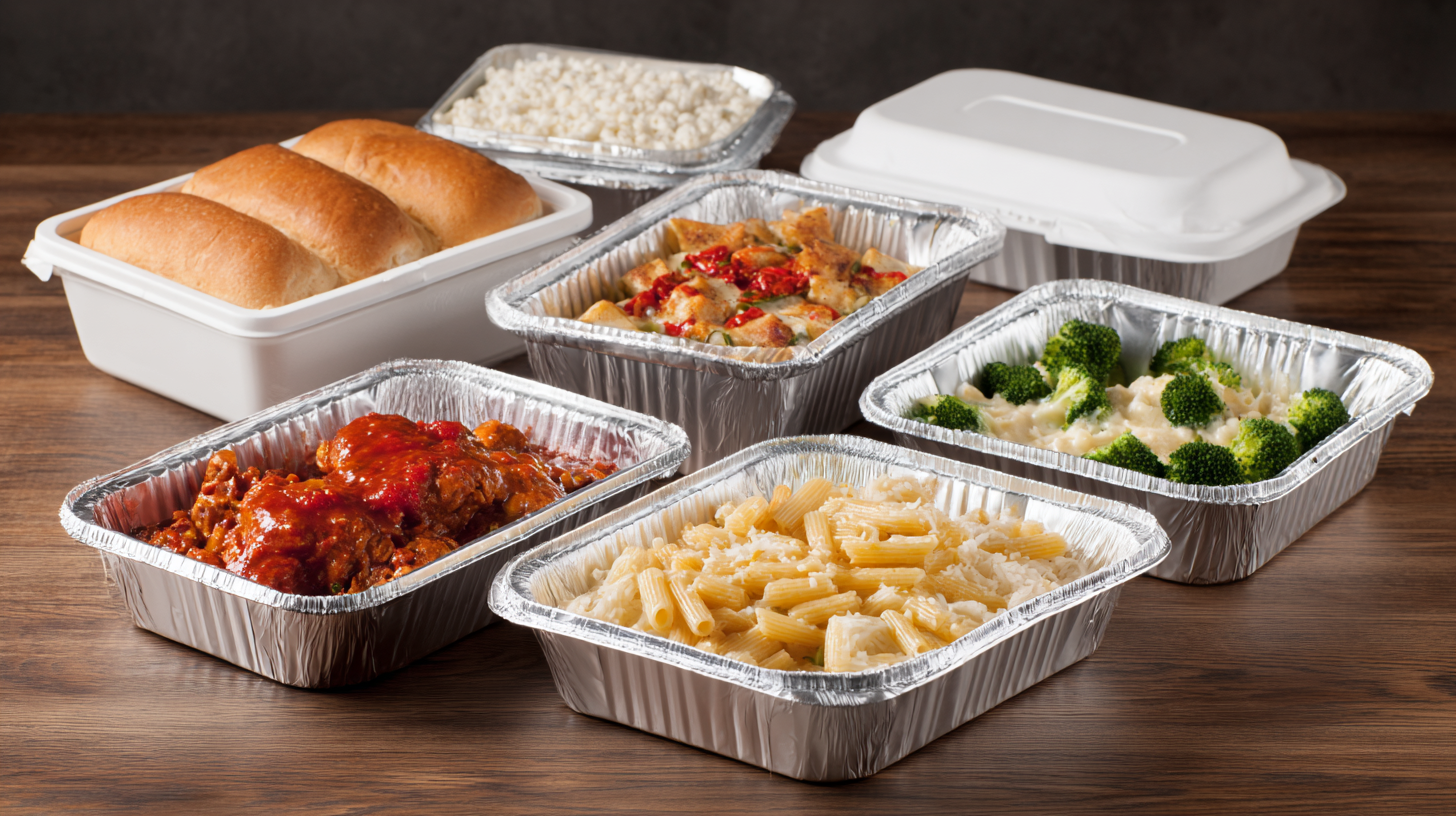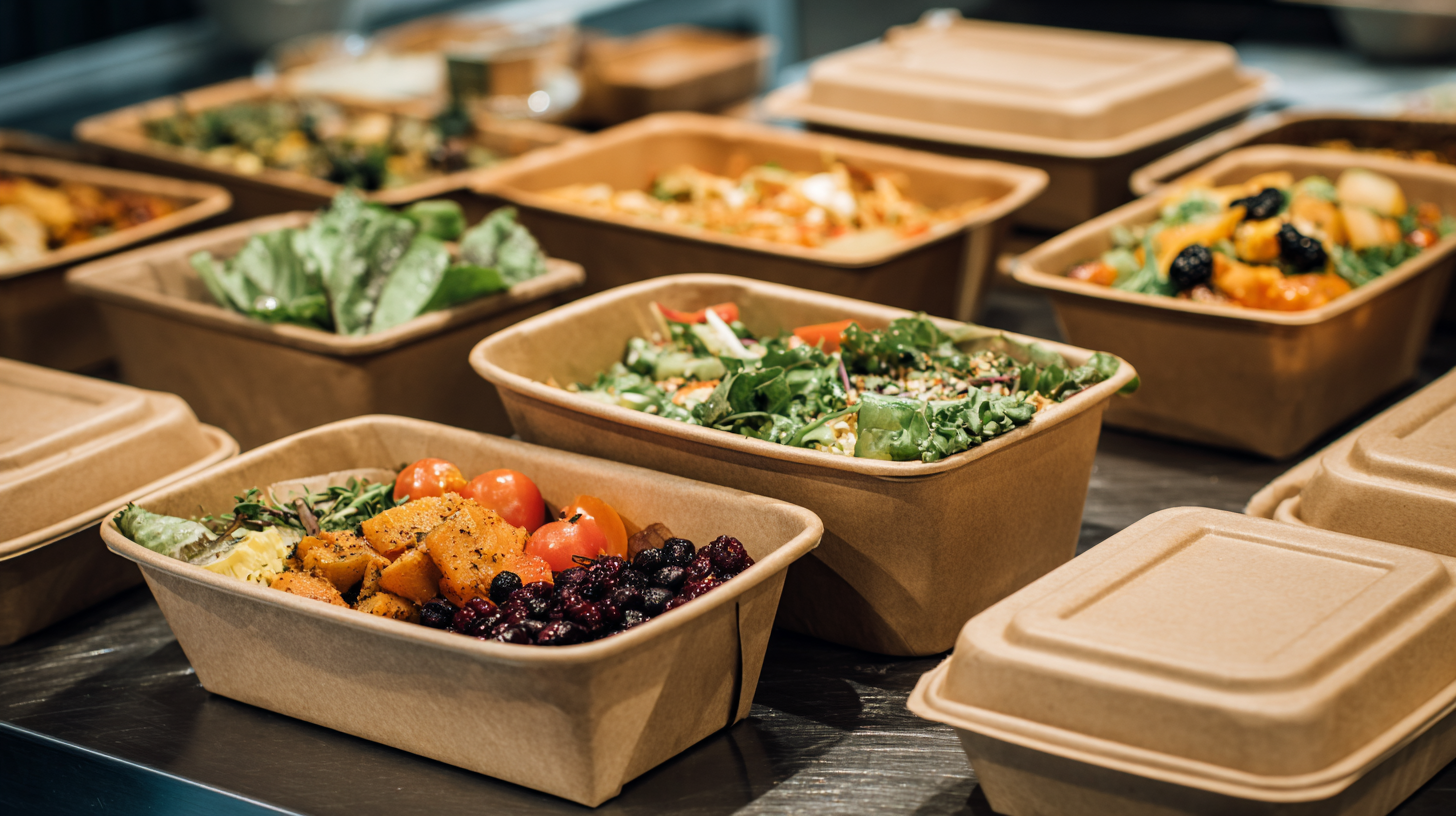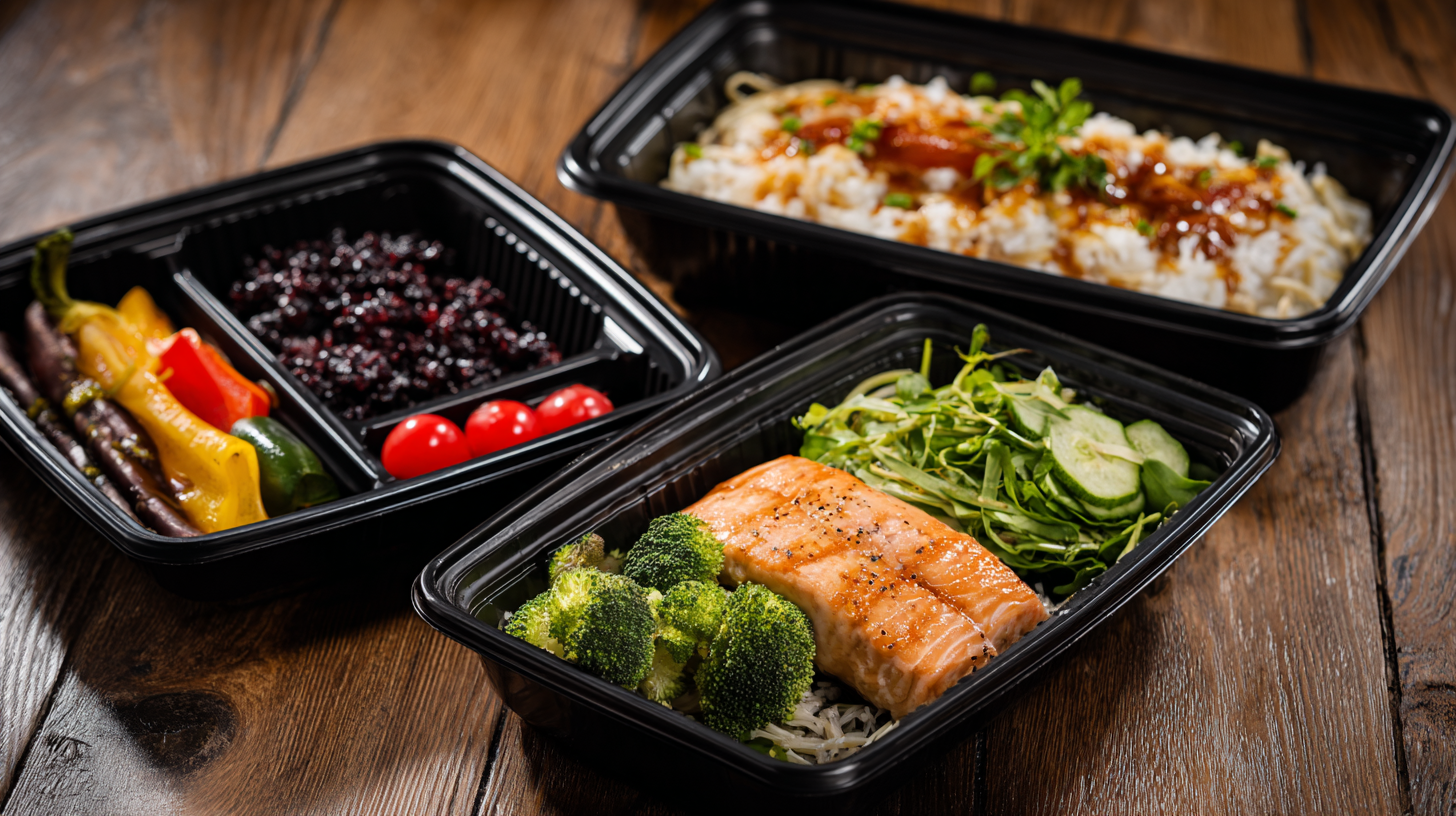Leave Your Message
As the global food industry evolves, the demand for sustainable and innovative Disposable Food Packaging Containers continues to rise. According to a recent report by Research and Markets, the global market for disposable food packaging is expected to reach approximately $245 billion by 2025, growing at a CAGR of 5.3% from 2020 to 2025. This growth is spurred by increasing consumer awareness regarding environmental issues and the push for eco-friendly alternatives. With innovations such as biodegradable materials and recyclable designs becoming mainstream, businesses are urged to rethink their packaging strategies to align with the changing preferences of environmentally conscious consumers. This blog delves into the latest industry trends and highlights the best alternatives in disposable food packaging, providing insights into how companies can meet both consumer demands and sustainability goals.

As we look towards the future, the demand for innovative materials in disposable food packaging is set to reshape the industry in 2025. Traditional plastic has faced increasing scrutiny due to environmental concerns, leading to a surge in the development of sustainable alternatives. Biodegradable materials, such as plant-based polymers and compostable fibers, are emerging as frontrunners, offering the same protective qualities as conventional packaging while significantly reducing carbon footprints. These innovative materials not only align with eco-conscious consumer preferences but also comply with stricter regulations aimed at minimizing waste.

In addition to biodegradability, advancements in packaging technology are paving the way for smart and functional designs. Innovations like edible packaging and plant-based coatings enhance food preservation while decreasing landfill contributions. These solutions not only enhance the consumer experience by providing freshness but also open avenues for brands to differentiate themselves in a crowded market. As these materials gain broader acceptance, they not only reflect a shift towards sustainability but also herald a new era in disposable food packaging, ensuring both convenience and environmental responsibility are prioritized.
The food packaging industry is witnessing a remarkable shift towards sustainability, with innovative solutions paving the way for eco-friendly options. As consumers become increasingly aware of their environmental footprint, companies are responding by developing biodegradable materials and compostable food containers. These eco-conscious alternatives not only reduce waste but also maintain the integrity and freshness of food. Materials such as plant-based plastics, recycled paper pulp, and even innovative seaweed-based packaging are gaining traction, appealing to both environmentally minded consumers and businesses looking to enhance their sustainability initiatives.
In 2025, we anticipate that sustainability trends will further evolve, with a focus on reducing single-use plastics. The introduction of reusable food containers, designed for durability and easy cleaning, can significantly minimize environmental impact. Additionally, advancements in packaging technology will likely lead to solutions that are not only sustainable but also functional, such as containers that offer thermal insulation or smart features that monitor food freshness. As companies adopt these innovative practices, they not only comply with regulations but also foster a culture of sustainability, aligning with the growing demand for responsible consumption in the food industry.
The landscape of disposable food packaging is evolving rapidly, driven by technological advancements that enhance manufacturing processes. According to a recent report by Smithers Pira, the global market for sustainable packaging is expected to reach $600 billion by 2025. Innovations such as automated manufacturing lines and smart packaging technologies are not just improving efficiency but are also reducing waste and ensuring food safety. Advanced materials like bioplastics and compostable films are paving the way for eco-friendly solutions that cater to both consumer preferences and regulatory demands.

When considering new packaging options, it's essential to stay informed about the types of materials being used. Opt for biodegradable or recyclable containers that align with your sustainability goals. In addition, investing in smart packaging technology, which incorporates QR codes or RFID tags, can enhance consumer engagement and streamline inventory management.
Furthermore, incorporating data analytics into the manufacturing process can lead to significant cost savings and productivity boosts. By leveraging IoT devices and automation, companies can minimize material waste and optimize their supply chains. This trend not only benefits manufacturers but also meets the growing consumer demand for transparency and accountability in packaging choices.
As consumer preferences evolve in 2025, the design of disposable food packaging containers is increasingly influenced by sustainability, convenience, and aesthetics. With a growing awareness of environmental issues, consumers are actively seeking packaging options that reduce waste and are eco-friendly. Biodegradable materials and recyclable designs are now in high demand, prompting manufacturers to innovate with sustainable resources. This shift towards greener options not only reflects consumer values but also ensures brands remain competitive in a market that prioritizes sustainability.
Moreover, the convenience of packaging plays a pivotal role in consumer choices. On-the-go lifestyles have encouraged the development of portable and user-friendly packaging solutions. Features such as resealable closures and easy-to-carry designs make disposable containers more appealing to consumers who prioritize practicality without sacrificing quality. Additionally, vibrant colors and attractive branding are essential for catching the eye of discerning consumers, as they seek a balance between functionality and visual appeal. This intersection of consumer preferences with design innovation is shaping a new era in disposable food packaging, making it essential for brands to adapt in order to meet the demands of a dynamic marketplace.
The disposable food packaging industry faces numerous challenges as it strives to meet growing consumer demands for sustainability and safety. According to a report by Grand View Research, the global disposable food packaging market is expected to reach $500 billion by 2025, which underscores the urgent need for innovative solutions. One of the most pressing issues is the reliance on plastic, which contributes significantly to environmental pollution. In response, many companies are exploring biodegradable materials and compostable packaging options that not only reduce waste but also cater to eco-conscious consumers.
Furthermore, the industry grapples with food safety regulations that vary across regions, impacting the design and materials used in packaging. The Food Packaging Institute reported that 75% of packaging professionals believe that compliance with evolving regulations is a major hurdle. To address this, manufacturers are investing in advanced materials that maintain food safety while being more sustainable. For instance, plant-based polymers and recycled materials are gaining traction, highlighting a shift toward solutions that align with regulatory standards and consumer preferences. As the industry navigates these challenges, the push for innovative packaging solutions continues to reshape the landscape of disposable food packaging.
